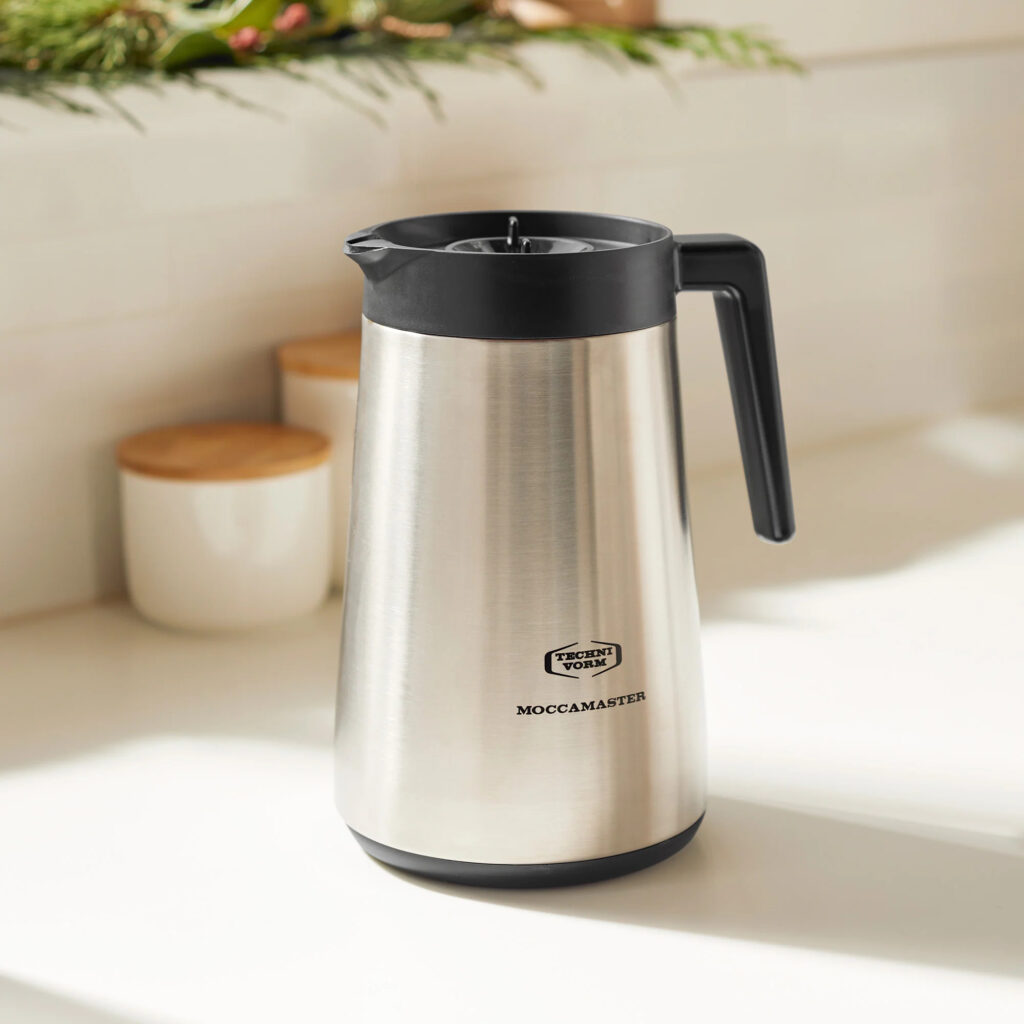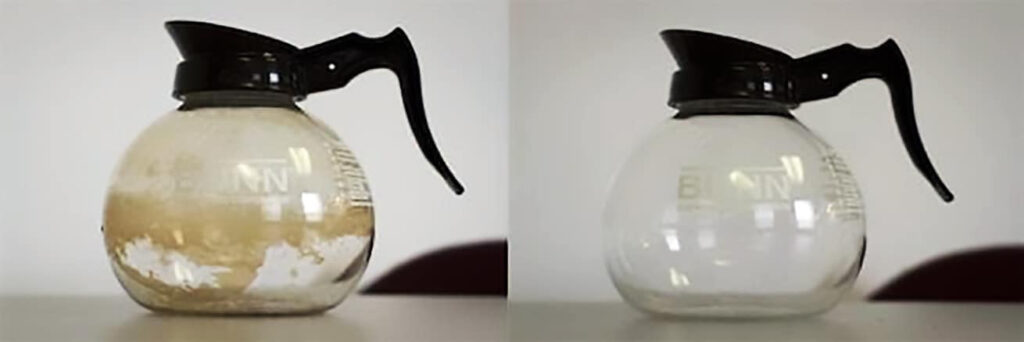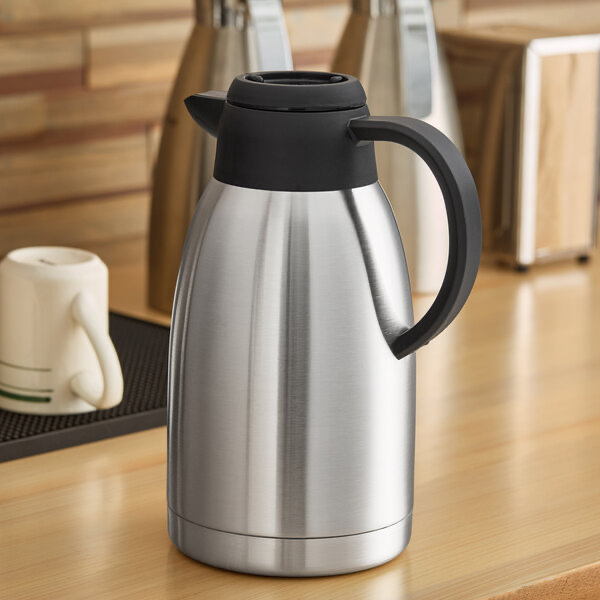If you’ve ever brewed a full pot of coffee and come back an hour later, you’ve probably noticed something disappointing — it just doesn’t taste the same. Maybe it’s gone bitter, lost its aroma, or cooled down completely. The culprit isn’t just time — it’s also the carafe you’re using.
When it comes to keeping your coffee hot and tasting fresh, two types of carafes dominate home and café setups: thermal and glass. Both have loyal fans, but they perform very differently in how they handle heat and preserve flavour. So which one should you choose? Let’s break down the science, practicality, and taste factors that separate the two.
The Basics: What Are Thermal and Glass Carafes?

A thermal carafe is typically made of stainless steel with double-wall insulation. It works like a vacuum flask — trapping heat inside without needing an external heat source.
A glass carafe, on the other hand, is usually made of borosilicate glass and designed to sit on a warming plate that keeps the coffee hot after brewing. You’ll find them on many drip coffee makers — they’re transparent, elegant, and classic.
At first glance, both do the same job: keep coffee hot. But the way they do it has a huge impact on taste.
Heat Retention: Who Keeps It Hotter, Longer?

This one’s pretty straightforward — thermal carafes win every time.
Because they use vacuum insulation, thermal carafes can keep coffee hot for 4–6 hours, sometimes even up to 12 if sealed properly. They don’t rely on any external heat, which means the coffee stays warm without continuing to cook or oxidize.
Glass carafes, on the other hand, rely on a hot plate to maintain temperature. That constant heat may seem useful, but it keeps “cooking” the coffee, gradually breaking down the delicate compounds that give coffee its complexity.
Verdict: Thermal carafes retain heat better and preserve quality.
Flavour and Freshness: The Real Deciding Factor

Here’s where things get interesting.
When coffee sits on a glass carafe’s hot plate, the bottom layer stays in direct contact with the heat source. Over time, this causes over-extraction — the bitter compounds in coffee start to dominate, while the sweet, aromatic notes fade.
A thermal carafe, by contrast, holds the brew at a stable temperature without adding more heat. This keeps the coffee’s natural balance intact — no extra bitterness, no burnt taste.
If you’ve ever wondered why café coffee tastes smoother hours after brewing, it’s because professional baristas almost always use thermal servers, not hot plates.
Verdict: Thermal carafes keep flavour fresher and more consistent.
Transparency and Aesthetics

This is one area where glass carafes shine — literally.
There’s something satisfying about seeing your freshly brewed coffee swirling inside a clear glass pot. It looks elegant, fits minimalist kitchens, and lets you monitor how much is left.
Thermal carafes, while sleek and modern, are opaque. You’ll need to lift and peek inside (or pour a little) to check how full it is.
Verdict: Glass carafes win for aesthetics and visibility.
Convenience and Maintenance

When it comes to cleaning and usability, both types have pros and cons:
Glass carafes: Lightweight, dishwasher-safe, and easy to clean — but also fragile. One bump against the sink, and you’re shopping for a new one.
Thermal carafes: More durable, often with tight lids that prevent spills and oxidation. However, they can be harder to clean thoroughly, especially if the mouth is narrow or the interior stains over time.
Some high-end thermal carafes come with wide openings and nonstick interiors, making them just as convenient as glass models — if you don’t mind spending a little more.
Verdict: Glass is easier to clean; thermal wins on durability.
Energy Efficiency
Thermal carafes don’t need power to stay warm — once the coffee is brewed, the insulation does the rest. That means no heating plate, no wasted energy, and no risk of burnt coffee.
Glass carafes require constant electricity to keep the hot plate running, even if you’re only keeping one cup warm. Over time, that can mean higher energy use and more heat damage to your brew.
Verdict: Thermal carafes are far more energy-efficient.
Which Is Better for Small Batches?
If you only brew one or two cups at a time, a glass carafe might still make sense. The heat loss is minimal when you drink it immediately, and the lighter build makes it easier to pour and rinse.
But if you brew larger batches or like to sip throughout the day, a thermal carafe is a game-changer. You can brew once in the morning and enjoy hot coffee into the afternoon — no reheating, no bitterness.
Verdict:
- Small, quick brews: Glass carafe
- All-day coffee drinkers: Thermal carafe
The Science of Coffee Freshness
Coffee freshness isn’t just about heat — it’s also about oxidation. Once brewed, coffee starts reacting with oxygen, leading to staleness and flavor loss.
Thermal carafes, with their airtight lids, slow this process significantly. They trap aroma compounds and reduce oxygen exposure. Glass carafes, especially those left open on a hot plate, allow air to circulate freely, speeding up oxidation and evaporation.
Verdict: Thermal carafes preserve both temperature and aroma longer.
Final Verdict: Which One Should You Choose?
Overall Winner: Thermal Carafe ✅

If your top priority is flavour, freshness, and consistency, go thermal. It’s the choice of professionals and serious coffee drinkers for a reason.
However, if you love the classic café look, want to see your brew, and usually finish your coffee quickly, a glass carafe can still be the perfect fit for your kitchen.
The Barista’s Take
As any barista will tell you: once coffee is brewed, time is its biggest enemy. Keeping it hot without burning it is an art — and thermal carafes do it best.
So if you love that first sip in the morning and wish it stayed that perfect for hours, invest in a good thermal carafe. Your taste buds (and your energy bill) will thank you.

Leave a Reply